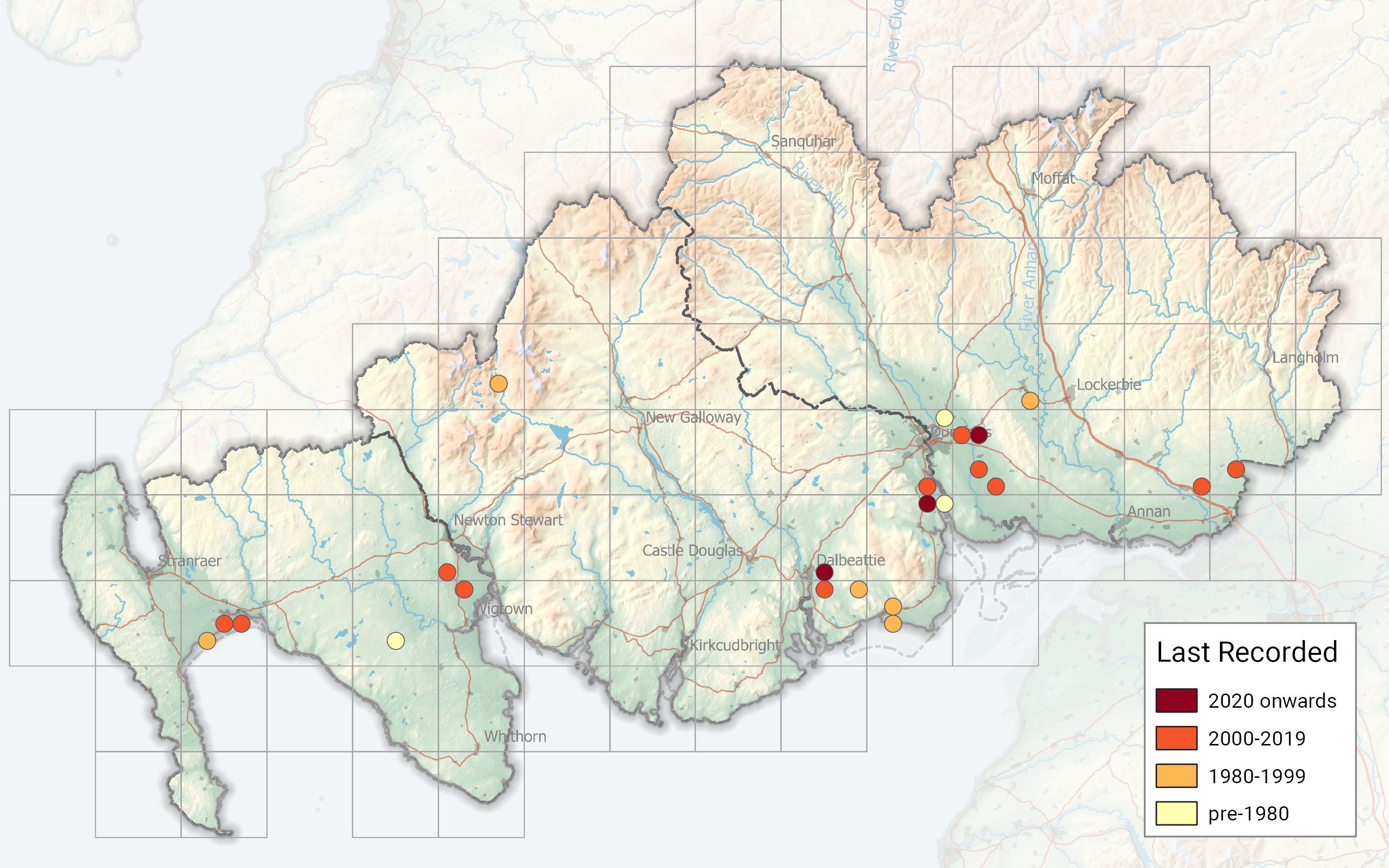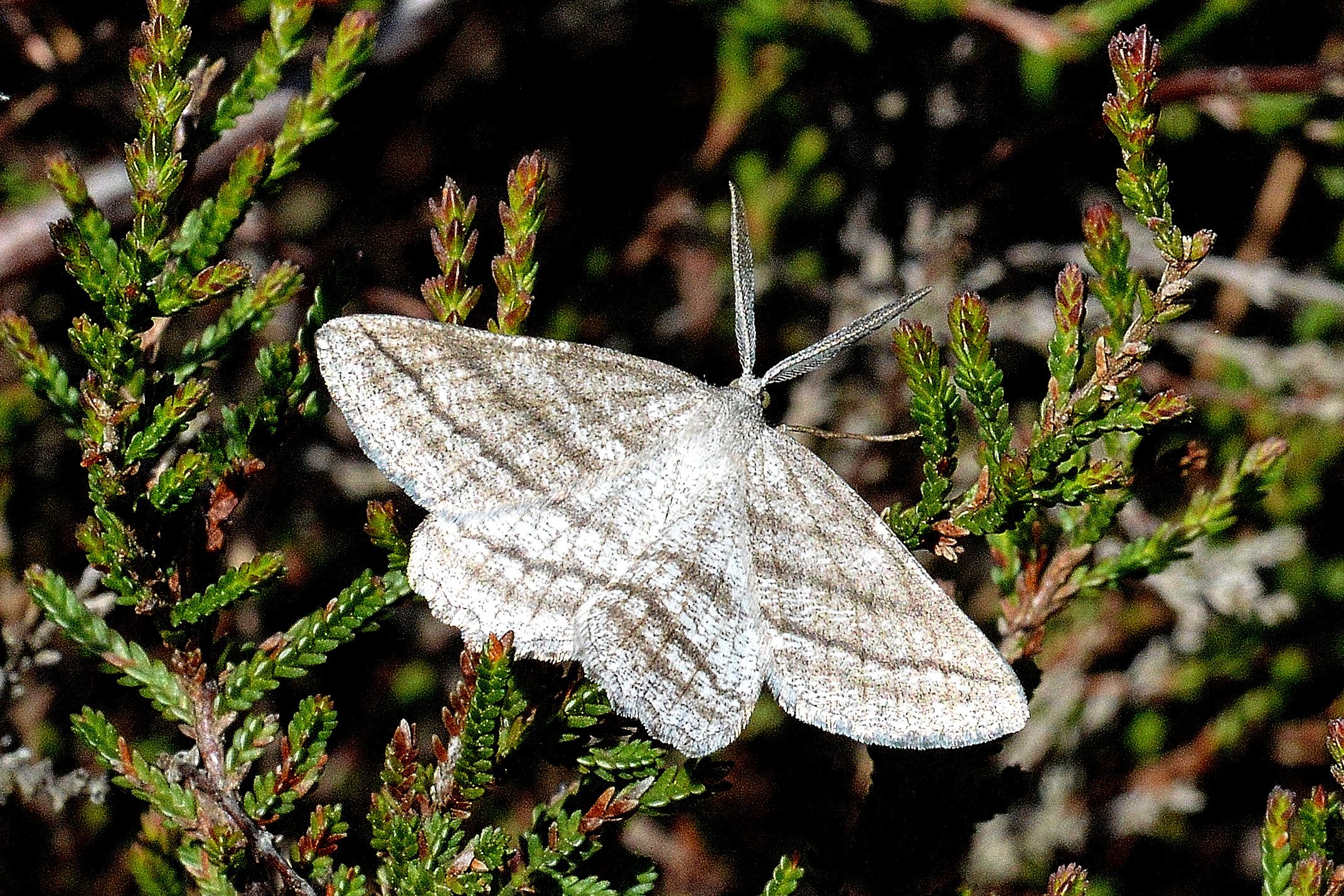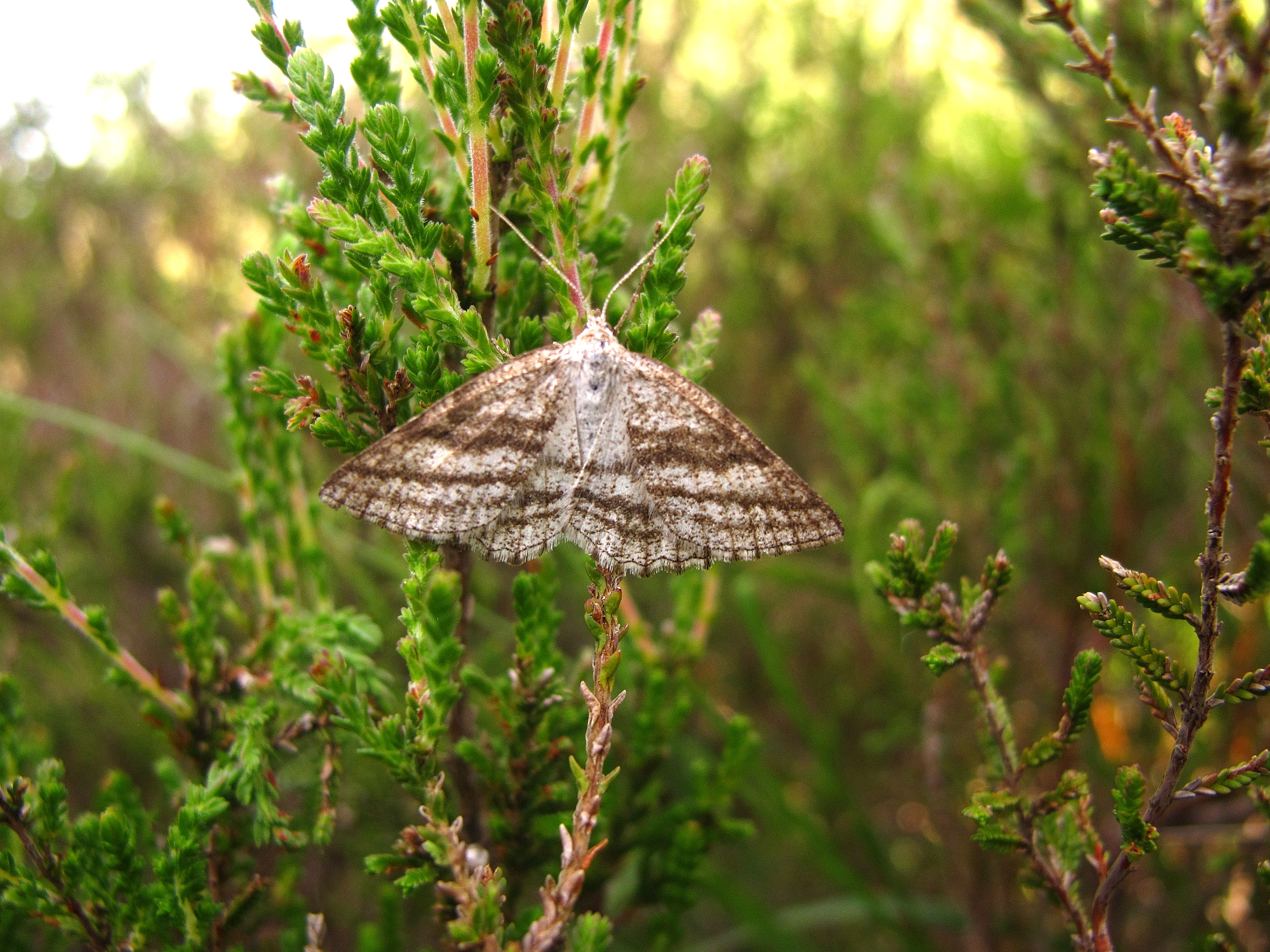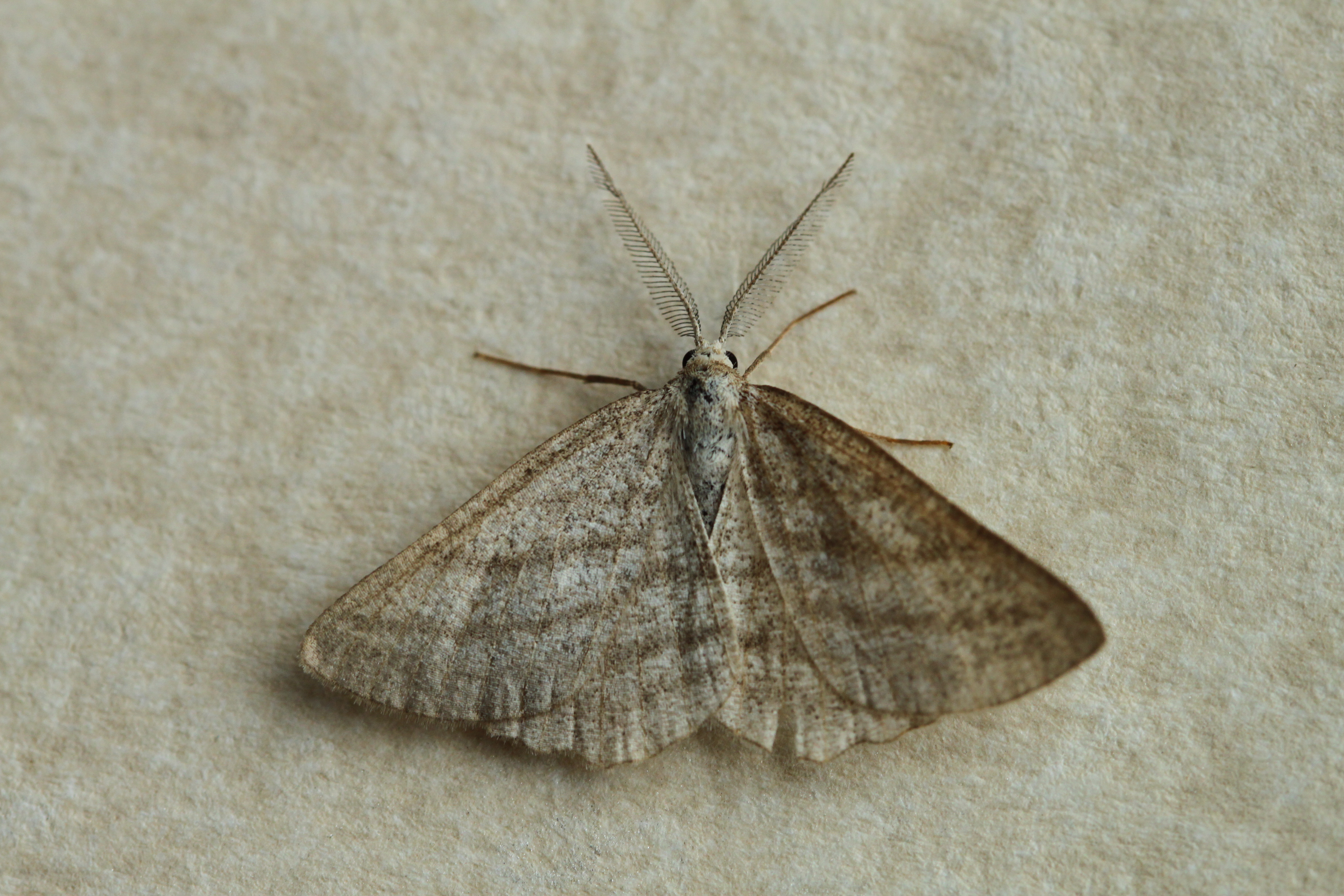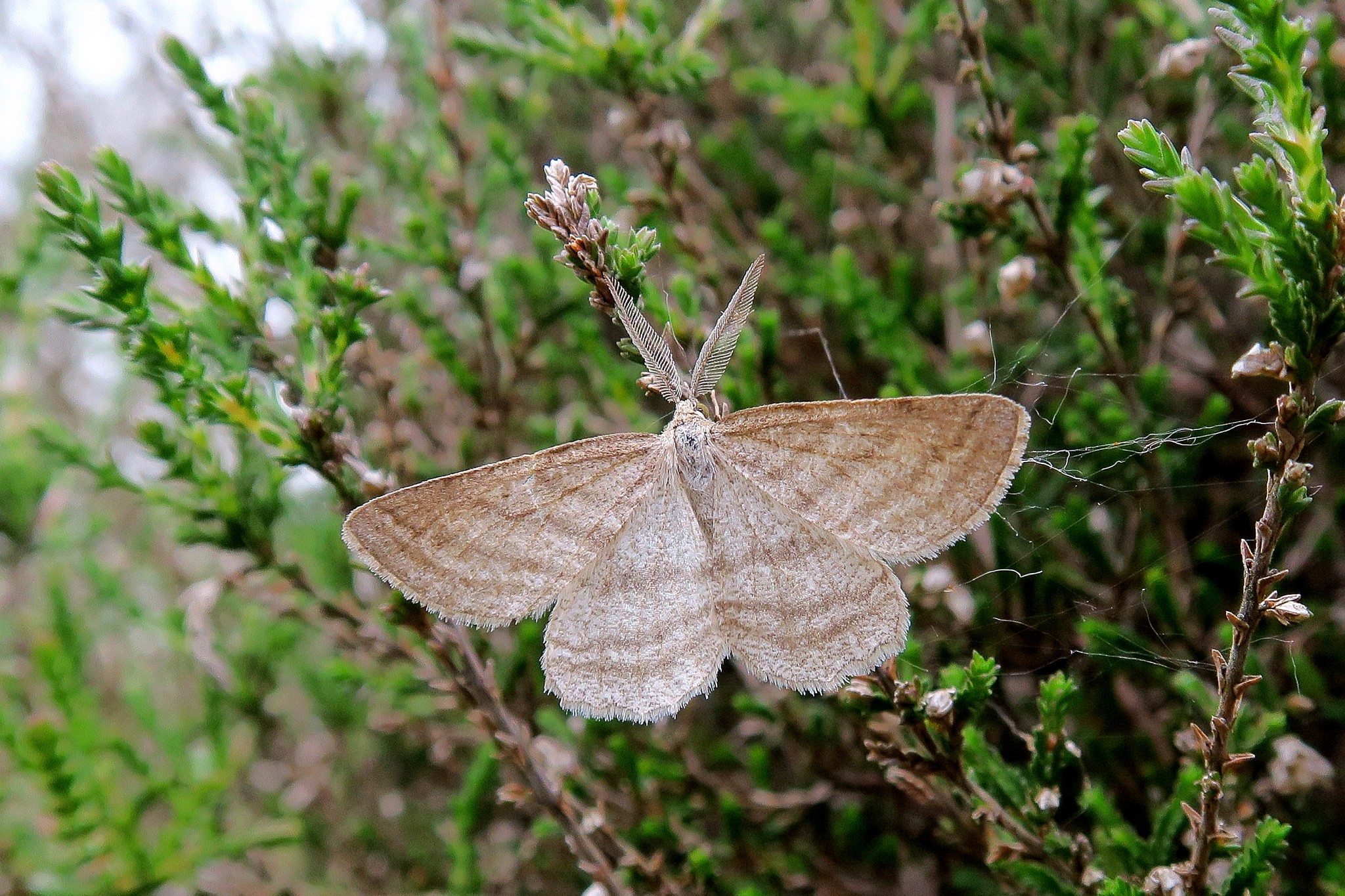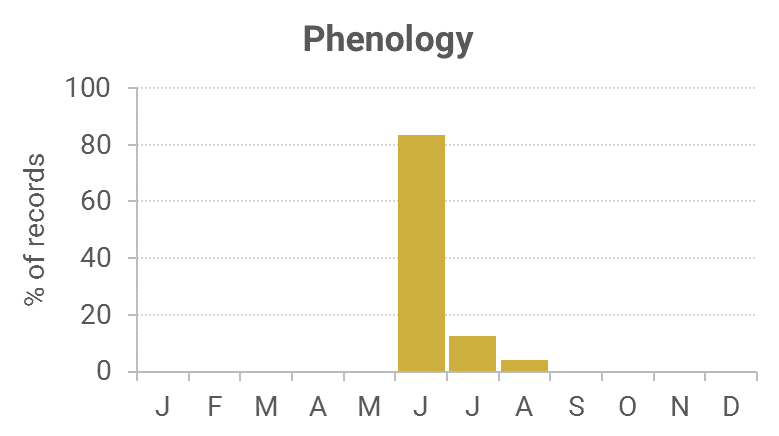Identification
Four prominent stripes across the forewing which has a straighter costa than Common Wave and Common White Wave, is larger than those two with the male having feathered antennae.
Recording method
Easily disturbed during the day from lowland heather habitats, comes to light.
Life cycle
One generation. Overwinters as a larva during August to late May.
Larval foodplants
Bell Heather, Broom, Heather and Petty Whin.
Habitat
Most Dumfries & Galloway records are from raised bogs, but also found on moorland, heathland and open woodland areas with adjacent heath.
History
First recorded for Dumfries and Galloway in 1862 for VC72 near Tinwald Downs, Dumfries by Lennon who stated that it ‘was not common’, in 1904 for VC74 at Corsemalzie by Gordon who had ‘beaten a single female from the heather on Low Moorand’ and in 1943 for VC73 at Kirkconnell by Duncan.

